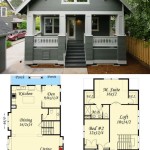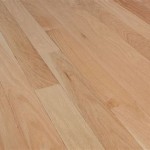Tile And Hardwood Floor Transition
When two different flooring materials meet, such as tile and hardwood, a transition strip is used to create a smooth and visually appealing connection. Transition strips are available in a variety of materials, including metal, wood, and plastic, and can be chosen to match either the tile or the hardwood flooring.
The type of transition strip that is best for a particular application will depend on the specific materials being used and the overall style of the space. For example, a metal transition strip may be a good choice for a modern or industrial space, while a wood transition strip may be more appropriate for a traditional or rustic space. Once installed, transition strip usually give a subtle and elegant look to your house.
Here are a few things to keep in mind when choosing and installing a tile and hardwood floor transition strip:- The height of the transition strip should be equal to the difference in height between the two flooring materials. If the transition strip is too high, it can create a tripping hazard. If it is too low, it will not be effective at preventing the edges of the flooring materials from curling up.
- The width of the transition strip should be wide enough to cover the gap between the two flooring materials. It should also be long enough to extend at least 1 inch beyond the edge of each flooring material.
- The material of the transition strip should be compatible with both the tile and the hardwood flooring. For example, a metal transition strip should not be used with a tile that is made of natural stone, as the metal can react with the stone and cause it to deteriorate.
- The color of the transition strip should match or complement the color of either the tile or the hardwood flooring. A contrasting color can be used to create a more dramatic look.
- Prepare the subfloor by making sure that it is level and smooth. If the subfloor is not level, the transition strip will not be able to be installed properly and could create a tripping hazard.
- Measure and mark the location of the transition strip. The transition strip should be placed at the point where the two flooring materials meet. Use a level to make sure that the transition strip is level.
- Apply adhesive to the back of the transition strip. Use a construction adhesive that is compatible with both the tile and the hardwood flooring. Apply the adhesive in a thin, even layer.
- Place the transition strip in place. Press the transition strip firmly into place and hold it for several minutes to allow the adhesive to set.
- Secure the transition strip with nails or screws. Use nails or screws that are long enough to penetrate the subfloor. Countersink the nails or screws so that they are flush with the surface of the transition strip.
- Caulk around the edges of the transition strip. Use a caulk that is compatible with both the tile and the hardwood flooring. Apply the caulk in a thin, even bead and smooth it out with your finger.
Once the transition strip is installed, you can enjoy the smooth and seamless transition between your tile and hardwood flooring.

Tile To Wood Transition Ideas Houzz Kitchen Flooring Open Plan Living Room Floor

How To Handle Flooring Transitions Wood Tile Carpet

70 Stunning Tile To Wood Floor Transition Ideas Design

How To Handle Flooring Transitions Wood Tile Carpet

Transition Time How To Connect Tile And Hardwood Floors
:strip_icc()/cdn.cliqueinc.com__cache__posts__197136__this-jaw-dropping-home-decor-trend-will-dominate-pinterest-1829237-1467898610.700x0c-87daaba1c5a749dd94877a7bb225cd00.jpg?strip=all)
Our Favorite New Trend Contrast Floors

8 Tile To Wood Floor Transition Tips And Ideas

Guide To Flooring Transitions

Hardwood Tile Transition Dalene Flooringdalene Flooring

Your Guide To Stunning Floor Transitions Next Day Floors








